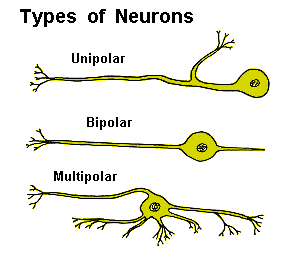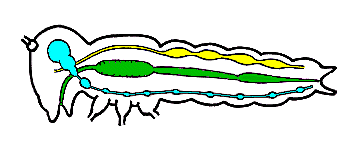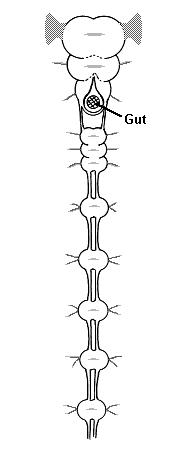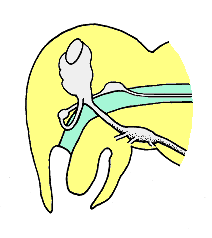Nervous System
 An insect’s nervous system is a network of specialized cells (called neurons) that serve as an “information highway” within the body. These cells generate electrical impulses (action potientials) that travel as waves of depolarization along the cell’s membrane. Every neuron has a nerve cell body (where the nucleus is found) and filament-like processes (dendrites, axons, or collaterals) that propagate the action potential. Signal transmission is always unidirectional — moving toward the nerve cell body along a dendrite or a collateral and away from the nerve cell body along an axon.
An insect’s nervous system is a network of specialized cells (called neurons) that serve as an “information highway” within the body. These cells generate electrical impulses (action potientials) that travel as waves of depolarization along the cell’s membrane. Every neuron has a nerve cell body (where the nucleus is found) and filament-like processes (dendrites, axons, or collaterals) that propagate the action potential. Signal transmission is always unidirectional — moving toward the nerve cell body along a dendrite or a collateral and away from the nerve cell body along an axon.
Neurons are usually divided into three categories, depending on their function within the nervous system:
- Afferent (sensory) neurons — these bipolar or multipolar cells have dendrites that are associated with sense organs or receptors. They always carry information toward the central nervous system.
- Efferent (motor) neurons — unipolar cells that conduct signals away from the central nervous system and stimulate responses in muscles and glands.
- Internuncial (association) neurons — unipolar cells (often with several collaterals and/or branching axons) that conduct signals within the central nervous system.
Individual nerve cells connect with one another through special junctions, called synapses. When a nerve impulse reaches the synapse, it releases a chemical messenger (neurotransmitter substance) that diffuses across the synapse and triggers a new impulse in the dendrite(s) of one or more connecting neurons. Acetylcholine, 5-hydroxytryptamine, dopamine, and noradrenaline are examples of neurotransmitters found in both vertebrate and invertebrate nervous systems.
Nerve cells are typically found grouped in bundles. A nerve is simply a bundle of dendrites or axons that serve the same part of the body. A ganglion is a dense cluster of interconnected neurons that process sensory information or control motor outputs.




